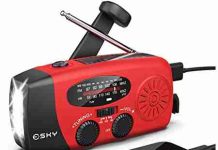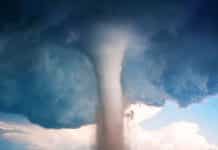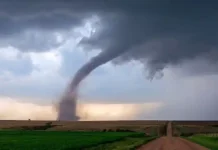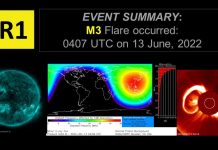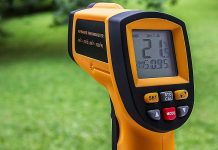In today’s fast-paced world, meteorologists play a crucial role in keeping us informed and prepared for the unpredictable forces of nature. But have you ever wondered how they manage to monitor and predict the specific type of storm or weather that is heading our way? With a myriad of advanced technology tools at their disposal, these weather wizards navigate through complex data sets and cutting-edge instruments to provide us with accurate forecasts and timely warnings. From weather satellites that capture breathtaking images of our planet from space to Doppler radar systems that track storms in real-time, meteorologists utilize a vast array of technology tools to ensure that we stay one step ahead of the weather’s wild whims.
Satellites
Satellites play a crucial role in modern meteorology, enabling meteorologists to monitor various types of storms and weather conditions with great accuracy. One type of satellite commonly used is the geostationary satellite. Geostationary satellites are positioned in orbit at a fixed location above the Earth’s equator, allowing them to continuously observe and track weather patterns.
These satellites provide meteorologists with valuable real-time data on cloud cover, precipitation, and even the movement of severe weather systems, such as hurricanes. By capturing images and measurements at regular intervals, geostationary satellites allow meteorologists to monitor the evolution and dynamics of these storms, providing essential information for forecasting and warning the public.
Another type of satellite used in meteorology is the polar orbiting satellite. Unlike geostationary satellites, which remain fixed in one location, polar orbiting satellites orbit the Earth at lower altitudes, passing over different regions with each orbit. This allows them to collect detailed information about the Earth’s atmosphere, including temperature, humidity, and wind patterns.
Polar orbiting satellites provide meteorologists with essential data for both short-term weather forecasting and long-term climate monitoring. These satellites’s ability to capture high-resolution images and gather detailed atmospheric measurements contributes to improved accuracy in weather predictions, particularly for severe weather events like tornadoes and blizzards.
Radar Systems
Radar systems are instrumental in providing meteorologists with valuable information about storms and weather conditions. Doppler radar is one of the most widely used radar technologies in meteorology. It measures the velocity of precipitation particles, allowing meteorologists to determine the motion and intensity of storms.
By analyzing the Doppler shift in radar signals, meteorologists can observe how precipitation is moving and identify areas of potential severe weather, such as rotation within a thunderstorm that could lead to the formation of a tornado. This real-time information is crucial for issuing timely warnings and ensuring the safety of communities in the path of dangerous weather.
Another radar technology used by meteorologists is weather surveillance radar. This type of radar is employed to scan large areas of the atmosphere, detecting the presence of precipitation and monitoring its intensity. Weather surveillance radar provides meteorologists with a broad view of the weather over a particular region, enabling them to track storms, monitor rainfall rates, and identify potential areas of severe weather development.
Weather Balloons
Weather balloons equipped with radiosondes are another essential tool in meteorology for monitoring storm and weather conditions. These specially designed balloons carry instruments that measure various atmospheric parameters, including temperature, humidity, and atmospheric pressure. As the balloons ascend through the atmosphere, they transmit real-time data back to ground-based stations.
The data collected from weather balloons is crucial for understanding the vertical structure of the atmosphere, which is essential for accurate weather forecasting. By launching weather balloons at regular intervals, meteorologists can track changes in the atmosphere over time, helping to identify patterns, detect the development of severe weather systems, and validate computer models.
Weather Stations
Weather stations are a fundamental component of meteorological monitoring. Automatic weather stations are fully automated systems that continuously gather and transmit weather data. These stations are equipped with sensors that measure parameters such as temperature, humidity, wind speed and direction, atmospheric pressure, and precipitation.
Automatic weather stations provide meteorologists with real-time, localized weather data, allowing them to monitor and analyze current weather conditions. This information is essential for developing accurate short-term forecasts, as well as studying weather patterns and trends over longer periods of time.
Surface weather observations are also conducted by meteorologists at various weather stations around the world. These observations involve manual measurements of weather parameters at specific locations. Trained meteorologists or weather observers record data such as temperature, rainfall, cloud cover, and visibility at predetermined intervals.
Surface weather observations provide valuable ground truth data, which helps validate and improve computer models and satellite measurements. By comparing surface observations with data from other monitoring tools, meteorologists can gain a comprehensive understanding of local weather conditions and make more accurate forecasts.
Computer Models
Computer models are powerful tools that meteorologists rely on to simulate and predict weather patterns. Numerical weather prediction models, based on sophisticated mathematical algorithms, use current weather observations and scientific principles to simulate the atmosphere’s behavior. These models take into account factors such as temperature, pressure, wind patterns, and moisture content to predict future weather conditions.
Numerical weather prediction models generate forecasts by dividing the atmosphere into a grid and calculating the evolution of properties within each grid cell over time. These models help meteorologists predict the movement and intensity of storms and provide valuable guidance for weather forecasting.
Ensemble forecasting is another technique used in meteorology. It involves running multiple simulations of a weather model, each with slight variations in initial conditions or model configurations. By generating a range of possible outcomes, ensemble forecasting provides meteorologists with a measure of forecast uncertainty. This information is crucial for understanding potential weather scenarios and communicating the associated risks to the public.
Data Assimilation
Data assimilation is a process that combines weather observations from various sources with computer models to improve forecast accuracy. Dynamic data assimilation techniques integrate observations into numerical weather prediction models in real-time, continually adjusting the model’s initial conditions to match the observed state of the atmosphere.
By assimilating data from satellites, radars, weather stations, and other sources, meteorologists can correct any biases or errors present in the model and produce more accurate forecasts. Dynamic data assimilation helps capture the complex interactions and dynamics of the atmosphere, leading to improved predictions of storms and severe weather events.
Observational data assimilation involves incorporating data collected from various observing platforms into weather prediction models after a period of time has passed. This technique allows meteorologists to use historical data to enhance model performance and understand past weather events better. By comparing model outputs with observed data, meteorologists can evaluate the model’s accuracy and make adjustments to improve future forecasts.
Lightning Detection Systems
Lightning detection systems are essential tools for monitoring storm activity and identifying severe weather threats. Radio Detection and Ranging (RADAR) is one method used to detect lightning. By analyzing radio waves reflected by lightning strikes, meteorologists can locate and track lightning activity.
RADAR-based lightning detection systems provide real-time information about the intensity and location of lightning strikes. This data helps meteorologists identify thunderstorms that pose a significant risk of severe weather, such as heavy rainfall, strong winds, or even tornadoes. By issuing timely warnings based on lightning activity, meteorologists can help protect lives and property.
Electromagnetic detection is another lightning detection method used in meteorology. It involves measuring the electrical signals emitted by lightning strikes. These signals, captured by specialized instruments called electromagnetic wave sensors, can provide valuable information about the occurrence and intensity of lightning.
Meteorologists use electromagnetic detection systems in combination with other monitoring tools to gain a comprehensive understanding of storm activity and associated weather conditions. Lightning detection systems play a vital role in predicting severe weather events and ensuring the safety of the public.
Weather Satellites
Weather satellites are paramount in monitoring storms and weather conditions from space. These advanced satellites capture valuable data and images, allowing meteorologists to observe weather patterns on a global scale. Weather satellites can be classified into two categories: passive satellites and active satellites.
Passive satellites detect natural energy emitted or reflected by the Earth and its atmosphere. They measure the radiation emitted by the Earth at different wavelengths, enabling meteorologists to gather information about temperature, cloud cover, and atmospheric composition. Passive satellites provide essential data for tracking storms, monitoring precipitation, and studying climate patterns.
Active satellites, on the other hand, emit their radiation and measure its reflection or scattering by the Earth’s surface or atmosphere. These satellites use radar or lidar (laser-based radar) technologies to gather data on cloud structure, precipitation rates, and atmospheric aerosols. Active satellites provide detailed information about storms, including their intensity, structure, and potential for severe weather.
Weather satellites, whether passive or active, play a crucial role in meteorology by providing a global perspective on weather systems and allowing meteorologists to monitor storms and weather conditions with unprecedented accuracy.
Weather Radars
Weather radars are indispensable tools for meteorologists in monitoring storms and weather conditions over a specific geographical area in real-time. Weather radars utilize various radar products to provide essential information about storm characteristics and movement.
Base reflectivity is a radar product commonly used to monitor weather conditions. It measures the intensity of radar signals reflected back to the radar by precipitation particles in the atmosphere. By analyzing base reflectivity images, meteorologists can estimate the rainfall rate, monitor the intensity of storms, and identify areas of potential severe weather development.
Mean radial velocity is another radar product used in storm monitoring. It measures the radial velocity of precipitation particles relative to the radar’s location. By analyzing mean radial velocity data, meteorologists can detect rotation within storms, indicating the potential for tornado formation. This information is crucial for issuing timely warnings and protecting vulnerable communities.
Storm relative motion is a radar product that helps meteorologists assess storm movement. It calculates the speed and direction of storms relative to the Earth’s surface. By analyzing storm relative motion data, meteorologists can track storm cells, predict their path, and issue accurate warnings based on the storm’s projected trajectory.
Weather radars provide meteorologists with real-time information about storm structure, intensity, and movement. By combining radar products and data from other sources, meteorologists can develop accurate forecasts and issue timely warnings to protect lives and property.
Hydrological Models
Hydrological models are essential tools for meteorologists in predicting and managing water-related hazards, such as floods. Rainfall-runoff models are commonly used to simulate the process by which rainfall is transformed into surface runoff and enters water bodies, contributing to potential flooding.
Rainfall-runoff models use information about rainfall patterns, surface characteristics, and soil properties to estimate runoff volume and flow rates. By simulating the behavior of a catchment area during rainfall events, meteorologists can predict the timing and magnitude of flood events, helping authorities prepare and respond effectively.
Flood forecasting models are another type of hydrological model used by meteorologists. These models use real-time and historical data on river flows, precipitation, and soil moisture to forecast potential flood occurrences. By incorporating various factors, such as rainfall forecasts and water discharge from upstream, flood forecasting models can provide critical information for flood management and emergency planning.
Hydrological models enable meteorologists to monitor and predict the behavior of water resources, helping authorities make informed decisions to mitigate the impacts of floods and other water-related hazards.
In conclusion, meteorologists use a wide range of technology tools to monitor various types of storms and weather conditions. Satellites, radar systems, weather balloons, weather stations, computer models, data assimilation techniques, lightning detection systems, weather radars, and hydrological models all contribute to accurately monitoring and predicting weather patterns. These tools, often used in combination, enable meteorologists to provide timely and reliable forecasts and warnings, ensuring the safety and well-being of communities worldwide.




